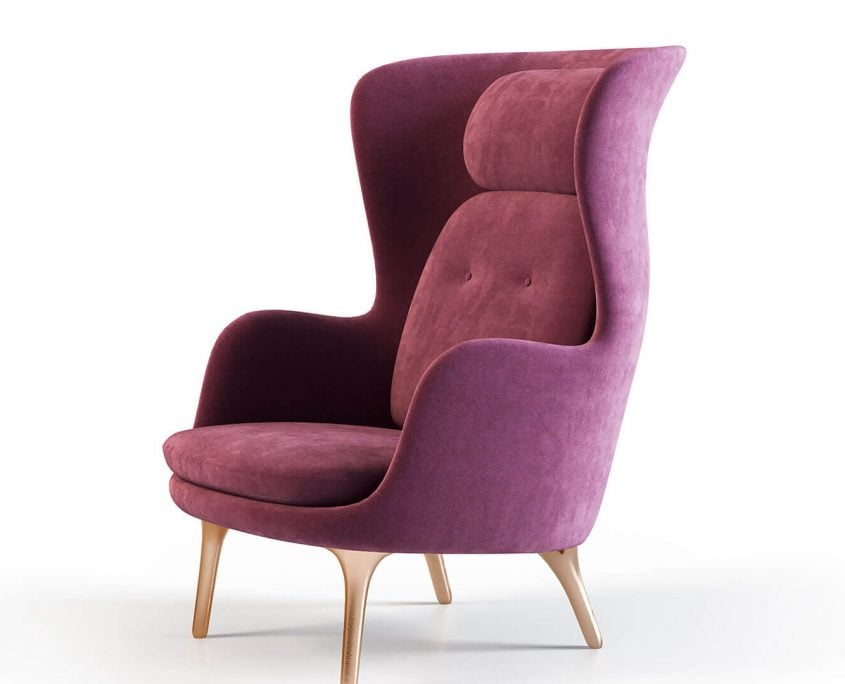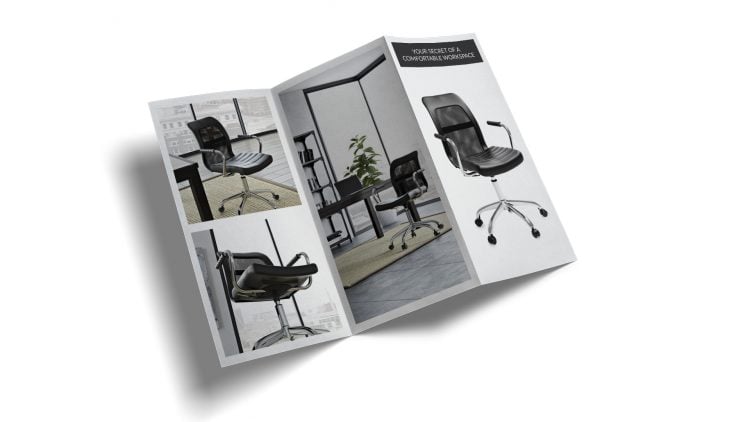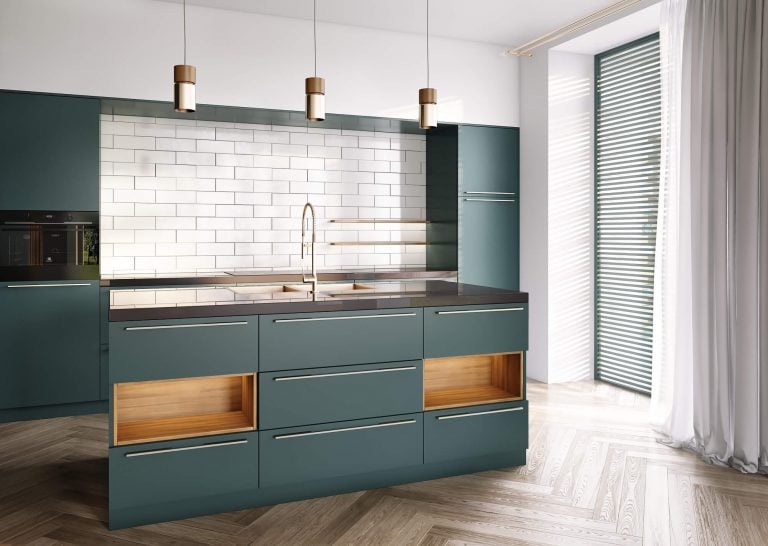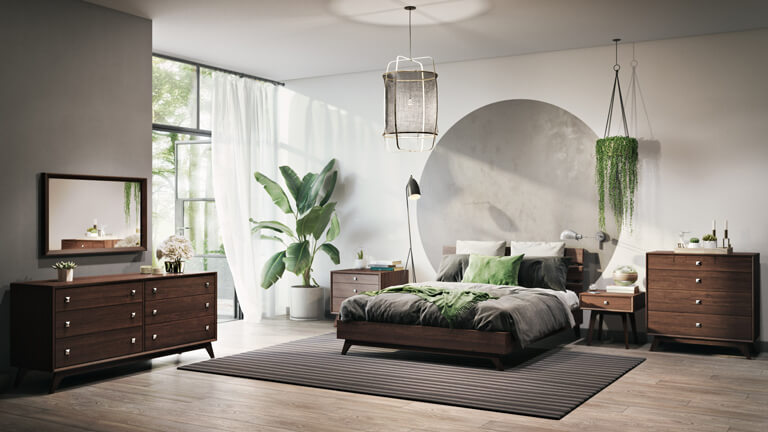3D Product Visualisation Services
What to Include in the Brief
Product visualisation creates a perfect world where the merchandise plays the main role. Whether a lifestyle or hero shot, the picture showcases the strengths of the piece, ignites emotions, appeals to values represented by the brand.
This way, a 3D rendering project requires creative thinking, software skills, hard work – and incoming data. So just as in advertising world, the brief plays a huge role in the creation of high-quality product visuals. It contains precious information on the concept and output format, which allow 3D Artists to hit the target, and the Product Marketer or Manufacturer – avoid unnecessary corrections and get perfect results in less time. Sounds interesting? Then check out what you should mention when filling out the task brief for a product rendering company in order to get perfect visuals.
#1. See If You Need a 3D Model

Before a 3D artist can get to visualisation, he needs to have a 3D model of the merchandise. So when preparing a technical assignment, it’s necessary to provide the 3D model, if there is one, or include the 3D product modeling task in the brief.
Now if there’s the need for 3D modeling, the Marketer or Manufacturer should provide the 3D visualisation studio with references. Photos by smartphone, drawings, material samples, a low-quality CG model – everything goes. Photo is the optimal option, but every bit helps. The important thing is for 3D Artists to understand how the item should look in terms of dimensions, aesthetics, and style.
Next, it’s important to specify the desired properties of a 3D model:
- low-poly or high-poly;
- type of modeling – wireframe, surface or solid;
- form and nuances of a polygonal mesh;
- if UV unwrapping is necessary.
If the Marketer or Manufacturer cannot give such technical specifications, he or she can simply indicate where the 3D model will be used – besides from the render in question. This way, a 3D artist can calculate which CG model properties are required to fit the purpose best and thus provide top-quality product visualisation services.
#2. Choose How to Highlight the Product

There are two different types of product visualisation – product shots and lifestyles. The first category comprises imagery showcasing the merchandise on a white or monochrome background, with props or not. Now lifestyle imagery shows the product in a natural environment or against a contextual background.
The choice of the group is important not only for the visual impact but for execution too. Which is why it’s vital to clear the matter in the technical assignment. Monochrome backgrounds are way easier and faster to create, while a lifestyle requires more work on the scene and props – and therefore more information on the concept.
#3. Specify the Camera Angle

Another indispensable part of the task brief for product visualisation is the list of camera angles. At this stage, it’s necessary to decide on the point of view for pictures:
- Eye-level. It’s the look at a product from the same level as we see it in real life. This angle makes for great hero images.
- Macro. This angle represents an extreme close-up. It allows demonstrating the tiniest details of an object.
- High angle. It’s the look at a product from a higher angle – as if the viewer is looking at the item from above.
- Low angle. This point of view is the opposite of the previous one, as it shows the piece as if the viewer is looking at it from below.
- Bird’s eye. This angle represents the look at a product directly from above – just like through the eyes of a bird that flies over it.
Different angles can showcase a product from all sides and make for informative visuals. This way, 3D visualisation allows buyers to see all its benefits by looking at pictures.
#3. Think Over the Desired Finishes and Textures
To ensure the accurate results of a product visualisation project, it’s necessary to provide references for the merchandise’s materials. This is vital for picking the right hues and making sure that the object’s surface has the special feel the Manufacturer intended. Hence the need for good reference materials, which can include the following:
ready-to-use texture files, if such have already been prepared or acquired on the web
reference picture of the necessary materials – a high-quality close-up image. Usually comes as a scan of the necessary texture or the photo of a different object with the desired material.
#4. Describe the Mood and Style
The main factor for setting the atmosphere in a product shot are shadows – so it’s essential to specify if the image needs them or not. Shadows can make a picture darker or colder or, on the contrary, leave it light and soft.
Lifestyle product visualisation has a significantly larger number of factors to create the mood. To get the desired results, Marketer or Manufacturer should:
Provide the lighting reference. It can be a picture or another product visualisation that illustrates the desired level and direction of light.
Specify the time of the day. Bright sunny morning or cold and calm night make for completely different moods, so it’s better to clarify this point in technical assignment.
Indicate the design style that would complement the product best.
Include the color palette reference. A crucial factor, especially when the brand already has a defined visuals identity.
The view from windows. It can be anything from a beautiful coast to the elegant streets of an old city. When there are windows in a lifestyle scene, the view from them can greatly influence the mood and ambiance.
The thoughtful combination of light, view, coloring, and design creates an atmosphere in the picture that can elicit emotions and influence the buying decision.
#5. Indicate the Image Properties

Depending on the purpose, product visualisations may require different properties. For instance, images intended for print marketing materials should be 4K or even 5K resolution, while for website FullHD quality works perfectly. And what file format will suit the production needs best? Small questions, huge impact. So to get the perfect result, it’s necessary to decide on the following:
Resolution. This affects the visual quality of the image, for it’ll be different for web and print.
DPI. It’s the property that influences print sizes. The correct DPI for handout materials, like a brochure or a flyer, is 300dpi, a billboard viewed at 30ft requires about 20dpi, while a poster needs a minimum setting of about 100dpi.
File format. Digital images go in a large variety of formats. For instance, a TIFF picture is the easiest to edit, yet, it has the largest file size since it contains a huge amount of detailed image data. JPEG and PNG both are great to use for web or print and give a fantastic quality.
Number of views, or the required number of pictures within one product visualisation project.
A clear and detailed technical assignment means as much for the project as a smooth workflow or professional software. Besides, it’s a great way to check if you have thought of everything in terms of concept and further usage. Not to mention the brief helps to get exactly what’s expected from the image and thus make sure the resulting marketing and advertising visuals meet their targets.
There’s a trouble with figuring out a concept? Well, a CGI studio can help here. For instance, we have a library of professional 3D scenes our clients can use for free in their images – or just as an inspiration too. If there’s a need for custom environment design, our Designers can develop a scene that will make the best features of your product really stand out. And finally, our 3D Artists know how to create outstanding 3D visualisation that will wow your audience – full of character, stylish and unique. Contact CGIFURNITURE for product rendering services and get show-stopping imagery!






Leave a Reply
Want to join the discussion?Feel free to contribute!